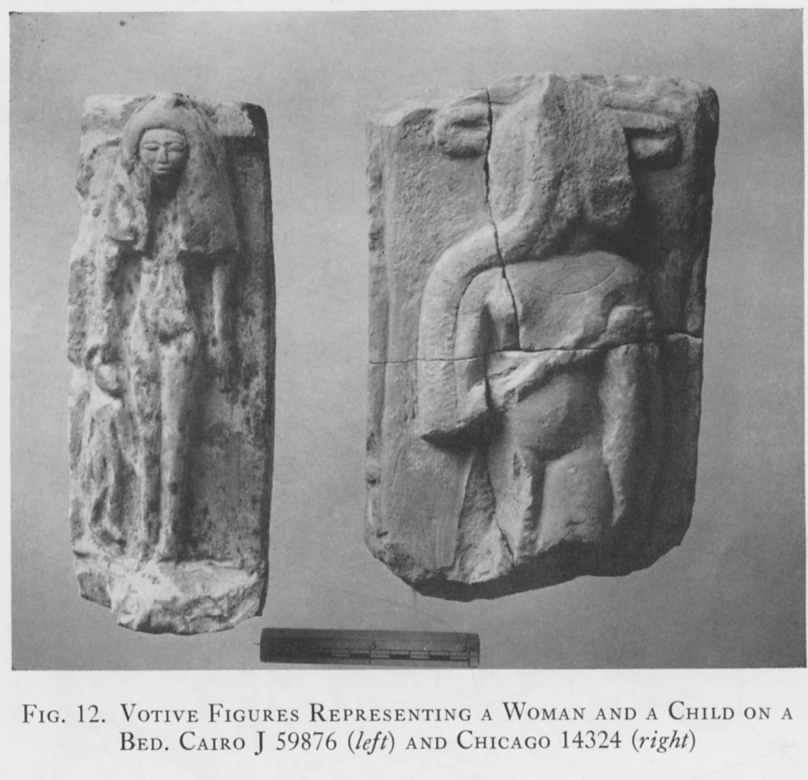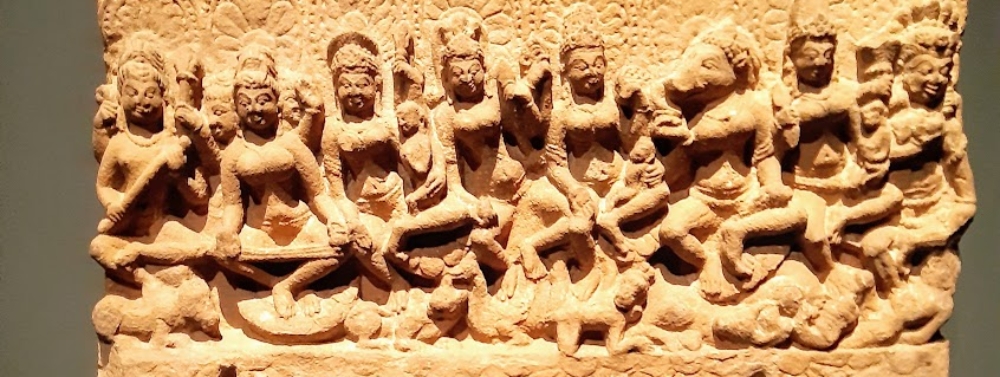Was “Unusual votive offerings of Medinet Habu/Luxor”

The Sugar Lady of Luxor and the Lady of Spring. Now she dissolves into the earth, many years after she was brought from Luxor
The Story of the Sugar Lady
The 19th century excavation at Medinet Habu in its obsession with the monumental, stone architecture of the Ramesside period destroyed a great deal of the archaeology of later periods.(1) Libyan, Roman, Coptic and Islamic material was removed from the site and dumped, largely unrecorded. What we have lost in terms of knowledge of these later periods is incalculable. I am particularly interested in some of the inexpensive, votive offerings from all periods, as they reflect the personal piety of non elite local people. Medinet Habu continues to be a focus for local folk practices, especially connected with fertility. It’s interesting that locals continue to offer some of the same objects, including the votive beds, in connection with the birthday of the Muslim saint – Abu al-Hajjaj. It is a good example of “archaeological memory”, ultimately of the ancient Egyptian cult of Amun-Min, his consort Mut and their offspring, Khonsu.
Many of Amun-Min’s ithyphallic images escaped the chisels of later prudish iconoclasts. In ancient times, the god’s wife Mut came to visit Amun from her temple a few miles north of here at Karnak. This was the famous festival of Opet, a “hierosgamos” or “mystical marriage”. The tradition is very much alive amongst the Sufi and Ismailis of this part of Egypt. Every year the shops are full of little sugar statues, dyed pink or red with rose water, showing either the prophet or a local saint and his wife, although these days far less “rampant”. A friend explains: “‘Mawlid’ (moulid, مولد) means birthday, ‘al-nabi’ means the prophet, i.e. Muhammad. However, in many places there will also be mawlids celebrating the birthdays of various local Sufi saints such as the mawlid for Sidi Abu al-Hajjaj . Mawlid traditions go back more than a millenia, but a lot of Salafis regard them as a heretical innovation, so they’re controversial these days in some places. Nonetheless, throughout much of the Muslim world mawlids define the local ritual calendar, much as saints’ days do in strongly-Catholic parts of Europe.

[Further reading: Elizabeth Wickert, (2009) “Archaeological Memory the Leitmotifs of Ancient Egyptian Festival Tradition and Cultural Legacy in the Festival Tradition of Luxor: the mulid of Sidi Abu’l Hajjaj al-Uqsori and the Ancient ‘Feast of Opet’” JARCE 45]
“Such objects consists of small boxes of baked clay, usually about 22cm long, 12-14 cm wide ad 18-20 cm hight, but sometimes smaller. They are closed at the top and open at the bottom. Occasionally a latticework pattern is scratched or painted on the top, an indication that such objects are bed models. The front has short legs, and its lower edge is scalloped, obviously to represent fabric hanging down. It is ornamented with low relief, which was pressed in a mold and occasionally colored. Usually a bes figure is represented at either end and between them a nude woman in a boat. The representation on most of the specimens found in our excavations are of to different types. On type (fig 13 and Pl 6 G 1-2 [Cairo J 59845 and Chicago 14779]) show the nude woman seated on a cushion and playing a stringed instrument. In the bow, which is ornamented with a goose head and neck with necklace, stands a girl rowing with her arms stretched forward; the in the stern stands another girl, pushing with a pole which she holds pressed against her armpit. Between the figures are superimposed papyrus umbels. The other type :figure 14 and Pl 6G 3 [Chicago 14780} and 4) shows a simpler scene. The nude woman stands in the centre of the boat facing forward and holding a papyrus stalk at either side. Smaller fragments with similar scenes are shown in Plat 6 G 5 [Chicago 14827 & 6)” p12
Votive figures
These are nude female figures, usually lying on a bed, often with a pillow under the wigged head, occasionally with a child at the breast (eg Pl 6H ] Chicago 14603]). Obviously they were in some way associated with the marital relationship. As a rule the figure itself was pressed out of clay in a mold, and the rest was modelled by hand. These objects are from 12 – 22cm long and often decorated with red and white lines. Two limestone specimens are shown in Figure 12. That at the right, with a child alongside, is 25cm long; the fragments at the right, with a child at the breast, is 16.5cm wide. These figures were all found in debris of poor dwellings of the period 11th-8th centuries bc.


For more erotic magic from Egypt see Mogg Morgan, Seth and the Two Ways
Note
(1) Uvo Holscher, The Excavation of Medinet Habu Vol V Post-Ramesside Remains Chicago 1954

